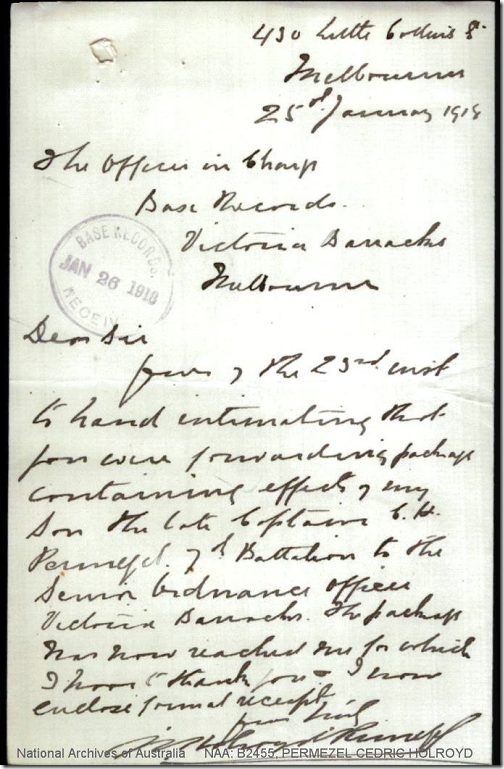Posted originally on February 14, 2015 by Neil
This series of posts is the most comprehensive I have done on family history. I am doing them backwards here so that in due course they will appear sequentially.
According to Joan Beaumont’s excellent Broken Nation: Australians in the Great War (2013):
On 6 August [1914], the British government asked the Australian and New Zealand governments to mount expeditions to capture the wireless stations in [German] Samoa, New Guinea, Nauru and Yap, in the Pelew Islands (Palau). Well aware of the strategic and potential commercial importance of these German colonies, the Australians quickly cobbled together an expeditionary force of some 1000 infantry, 500 naval reservists, and signals and medical personnel. In command was a militia officer, Colonel William Holmes… The navy, whose role in World War I is often overlooked, provided support in the form of the Australia, the new light cruiser Sydney, the cruiser Encounter (on loan from the Royal Navy), three destroyers, Warrego, Parramatta and Yarra, and Australia’s only two submarines, AE1 and AE2.
My father’s cousin Norman Whitfield, then living in Wollongong, was a member of that expedition. I have posted about him several times, including 1914-1918, One hundred years ago or thereabouts…, More Whitfield family history.

My father’s cousin, Norman Harold Whitfield.
I recently found on Trove an item from the South Coast Times and Wollongong Argus 12 March 1915: “On Tuesday evening the N.W. L.S.and S. Club [North Wollongong Surf Club] entertained their club members of the New Guinea expedition who have returned to Wollongong at a welcome social. Alderman Lance, President of the Club, presided. The guests of the evening were J. Young, J. Mitchell, N.. Whitfield, G. Walklate, A. Hosking, A. K. Tregear….” (I always find it odd seeing what could be my own name like that!)


NOTE: Norman Whitfield went on to win the Military Cross and bar; I also note 17 May 1917 “WOLLONGONG, Wednesday. Captain Geo. Walklate, who won the Military Cross at the Somme, arrived home last night and was accorded a civic reception in the Town Hall.” See Illawarra Volunteers.
Norman Whitfield had a brother, Thomas Harold Whitfield, also in that New Guinea expedition? Or is that an error?
See also Illawarra Boys in the AN-MEF – first action of WW1 – New Guinea. See Norman Whitfield’s paperwork on Discovering Anzacs: he seems to be the same age as that Thomas. The family tree lists as siblings: Stanley Thomas Whitfield (b. 1888), Elsie Sophia W (b. 1890), Norman Harold W (b. 1896) and Keith Frederick W (b. 1902). No Thomas Harold.
That mystery I cleared up in a later post.
The matter of Thomas Harold Whitfield was taken up by Kerrie Anne Christian of the Bulli History site Black Diamonds, whose post “Illawarra Boys in the AN-MEF…” I referred to last time. It does seem clear that Thomas Harold and Norman Harold are one and the same – for starters they share the same number, 684.





















Neil, it was wonderful to assist in your uncovering more information of Norman. He, like a number of Wollongong boys, was quick to enlist in WW1 in August 1914. Initially serving with the AN & MEF in New Guinea, before he re-enlisted in 1915, to serve in other theatres, demonstrating leadership and bravery, so rising through the ranks. You must be very proud of him. Kerrie Anne Christian. President Black Diamond Heritage Centre Bulli & Illawarra Family History Group.